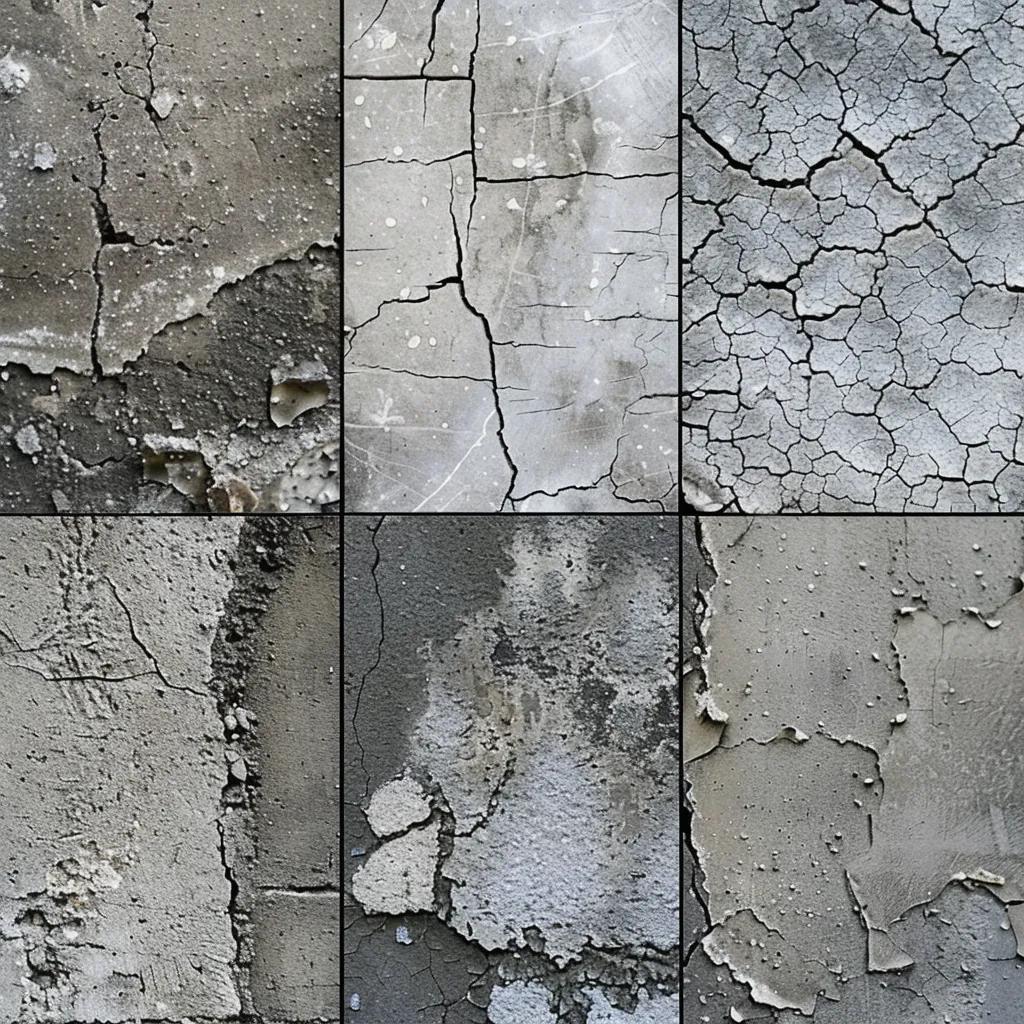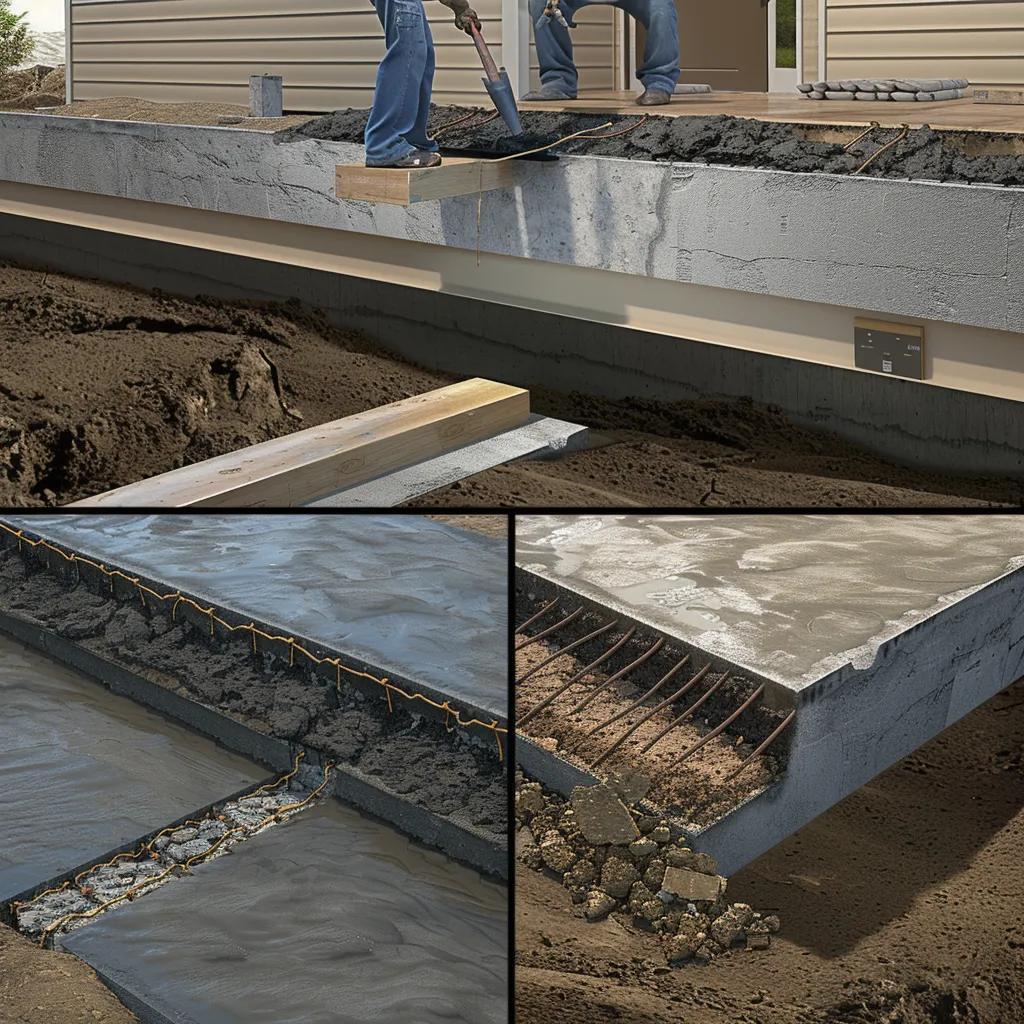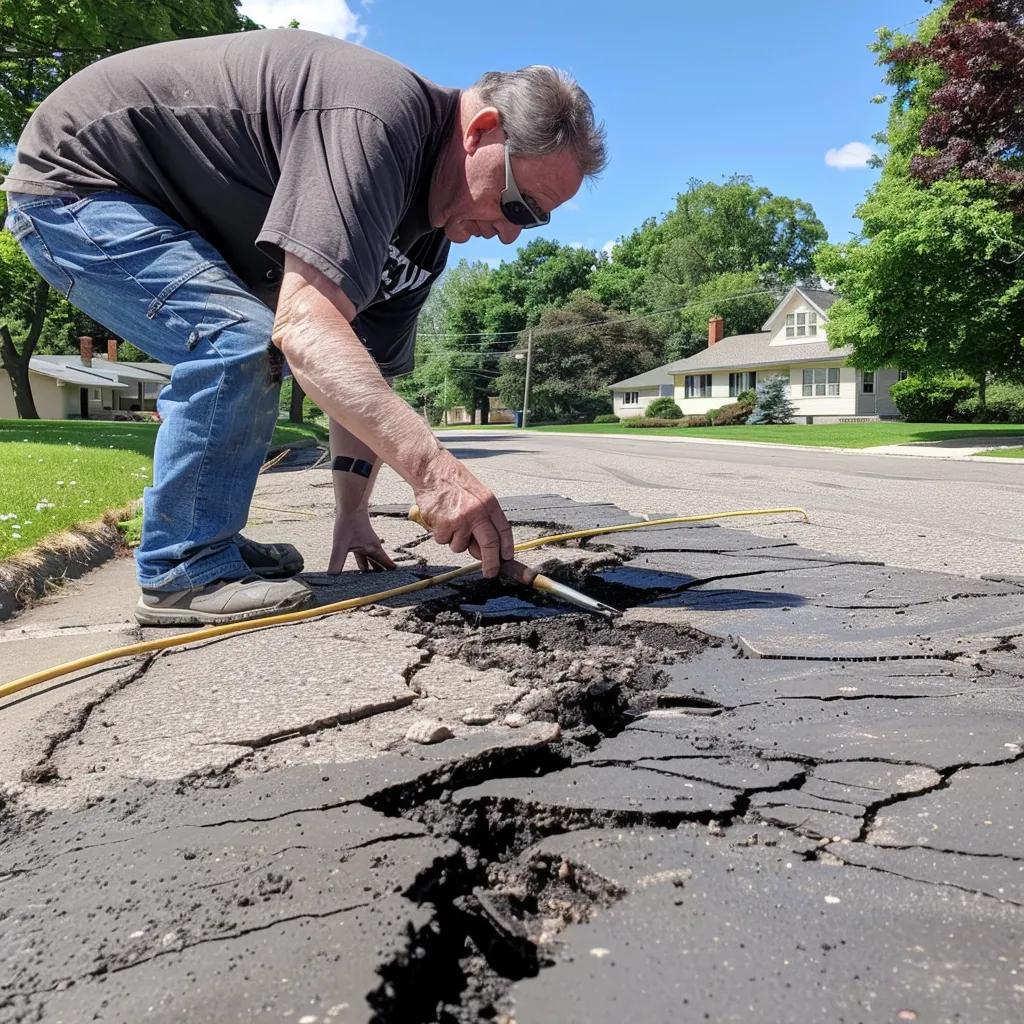Repair vs. Replace Concrete Surfaces in Duluth: Finding the Most Cost-Effective Solution
In Duluth, concrete surfaces face unique challenges that leave homeowners pondering whether to repair or replace for the best value. Cracked driveways, sinking sidewalks, and uneven patios demand a keen understanding of local freeze-thaw cycles, soil settlement, and repair technologies to ensure a lasting solution. This guide breaks down common damage types, the mechanics of patching, leveling, and replacement, compares costs and long-term ROI, and explores how Duluth’s climate influences your options. Partnering with a local contractor ensures reliable results. By the end, you’ll know when repair is the winner, when replacement is the way to go, and how to request a free concrete estimate for drives, patios, and sidewalks across Duluth, MN.
What Are the Common Types of Concrete Damage in Duluth?

Concrete damage refers to visible deterioration of outdoor slabs that undermines safety and appearance. Duluth’s climate and everyday use produce cracks, sinking slabs, spalling surfaces, and discoloration that reduce structural integrity and curb appeal. For example, a lightly cracked patio may be patched and sealed to restore function, while a deeply spalled driveway might require extensive remediation.
Recognizing these four primary conditions helps you match them to the right solution before exploring repair or replacement.
- Cracked Concrete – Fine to hairline cracks caused by shrinkage, freeze-thaw, or heavy loads.
- Sinking Slabs – Sections that settle unevenly, creating trip hazards and water pooling.
- Spalling and Surface Flaking – Chunks of concrete breaking off due to freeze-thaw cycles and deicing salts.
- Discoloration and Staining – Surface blemishes from oil spills, mold growth, or inconsistent curing.
Each damage type signals different repair or replacement merits and cost profiles, guiding the next decision on when to restore versus rebuild.
What Causes Cracked, Sinking, and Uneven Concrete in Duluth’s Climate?
Freeze-thaw cycles in Duluth undermine concrete by repeatedly expanding and contracting trapped moisture, which widens micro-cracks and flakes surface layers. Soil settlement under slabs shifts load distribution, producing uneven areas that worsen over time. Poor initial installation—insufficient base compaction or sub-base preparation—accelerates cracking and sinking, especially on driveways and patios. Heavy impacts from vehicles or snowplows introduce stress fractures, while deicing compounds can leach calcium hydroxide, promoting surface deterioration. Recognizing these mechanisms directs you to preventive measures and targeted repairs that slow future damage.
Freeze-Thaw Cycles and Concrete Deterioration
Freeze-thaw cycles significantly impact concrete durability, as repeated freezing and thawing can cause internal pressure, leading to cracking and spalling. This process is exacerbated by the presence of moisture within the concrete, which expands upon freezing, causing stress and damage over time.
American Concrete Institute, “Guide to Durable Concrete” (2016)
This research supports the article’s discussion of how freeze-thaw cycles affect concrete in Duluth’s climate.
How Do You Identify Structural Damage and Safety Risks in Concrete Surfaces?
Structural damage in concrete manifests as wide cracks, deep spalling, misaligned joints, and significant slab displacement exceeding ¼ inch. These signs often indicate compromised load-bearing capacity and trip hazards. To assess risk:
- Inspect for cracks wider than ⅛ inch that propagate beneath the surface.
- Check for slab drops creating gaps under one edge of the concrete.
- Look for rust stains or rebar exposure signaling internal corrosion.
- Test walkways for noticeable deflections under foot traffic.
Early detection of these indicators ensures timely repair or replacement decisions that protect visitors and preserve property value.
When Should You Repair Concrete Surfaces Instead of Replacing Them?
Minor concrete issues can often be resolved quickly and affordably through specialized repair methods. Repair is more cost-effective than replacement when damage is superficial, does not compromise structural integrity, and slab alignment remains sound. For a driveway with hairline cracks or a patio with slight spalling, patching and resealing restore function and curb appeal at a fraction of replacement cost.
What Are the Most Effective Concrete Repair Methods for Duluth Homes?
Concrete repair methods range from simple patching to advanced resurfacing, each tailored to specific damage:
- Crack Filling and Injection – Epoxy or polyurethane grouts injected into narrow cracks to bond the slab and prevent moisture intrusion.
- Surface Patching – Cementitious compounds applied to spalled or chipped areas, restoring a smooth finish.
- Overlay and Resurfacing – Thin polymer-modified overlays that rejuvenate worn surfaces and offer decorative finishes.
- Sealant Application – Penetrating sealers that repel water and salts, extending patch life.
Concrete Repair Methods and Effectiveness
Various concrete repair methods, such as crack filling and surface patching, are effective in restoring the function and appearance of damaged concrete surfaces. These methods are often more cost-effective than full replacement, especially when the damage is superficial and does not compromise the structural integrity of the concrete.
National Ready Mixed Concrete Association, “Concrete Repair and Maintenance” (2018)
This citation provides further information on the effectiveness of concrete repair methods, which is relevant to the article’s discussion of repair versus replacement.
These techniques improve safety, enhance durability, and boost curb appeal without the downtime and cost of full removal.
How Do Concrete Leveling Techniques Like Mudjacking and Polyurethane Foam Injection Work?
Below is a comparison of two popular slab-lifting options that correct sinking and uneven concrete with minimal demolition.
| Method | Attribute | Value |
|---|---|---|
| Mudjacking | Material | Cement-sand slurry |
| Mechanism | Slurry pumped under slab to lift it back to level | |
| Benefit | Economical, proven over decades | |
| Polyurethane Foam Injection | Material | Expanding polyurethane |
| Mechanism | High-density foam expands under slab, filling voids | |
| Benefit | Lightweight, cures quickly, minimal runoff, precise lift |
Both methods eliminate trip hazards and water pooling; mudjacking offers budget-friendly results, while foam injection improves soil stabilization and cures faster. Selecting the right option depends on soil conditions, project scale, and desired cure time.
What Are the Benefits of Concrete Repair for Driveways, Patios, and Sidewalks?
Concrete repair supports home value and functionality by:
- Improving safety through leveled slabs and sealed cracks.
- Enhancing curb appeal with fresh surfaces and decorative overlays.
- Extending slab lifespan by preventing moisture intrusion and freeze-thaw damage.
- Reducing overall cost compared to full replacement.
Repair offers a fast return to use—driveways reopen within hours of crack injection—and preserves structural integrity when performed by local experts familiar with Duluth’s climate stresses.
When Is Concrete Replacement Necessary for Duluth Properties?
Concrete replacement becomes necessary when damage is too extensive for patching or leveling to restore safety and durability. Full removal and new installation ensure long-term performance when cracks exceed ⅜ inch, slabs tilt beyond 1 inch, or multiple repairs have failed.
What Are the Signs That Concrete Needs Full Replacement?
Extensive damage indicators include:
- Deep, widening cracks that compromise slab continuity.
- Severe spalling revealing aggregate and rebar corrosion.
- Multiple sinking areas not corrected by leveling methods.
- Age over 25–30 years with recurring repairs and surface wear.
When these conditions appear, replacement restores slab uniformity, eliminates safety risks, and establishes a fresh foundation for decades.
What Is the Step-by-Step Process for Concrete Replacement in Duluth?

Concrete replacement follows a structured workflow:
- Demolition and Removal – Break out existing slab and haul debris offsite.
- Sub-Base Preparation – Excavate and compact aggregate base for proper drainage.
- Formwork and Reinforcement – Install edge forms and lay steel rebar or wire mesh.
- Pouring and Finishing – Place and level fresh concrete, apply trowel or broom finish.
- Curing – Maintain moisture and temperature to develop strength over 7–28 days.
This sequence ensures structural integrity, effective load distribution, and an even surface that aligns with local building codes.
How Does New Concrete Installation Improve Longevity and Appearance?
A new concrete slab delivers:
- Fresh surface free of old cracks and stains.
- Optimized mix design incorporating air-entrainment for freeze-thaw resistance.
- Enhanced finish options, from exposed aggregate to stamped patterns.
- Long lifespan—up to 30 years or more with proper maintenance.
New installation promotes safety, elevates curb appeal, and eliminates recurrent repair costs tied to aging slabs.
How Much Does Concrete Repair and Replacement Cost in Duluth?
Understanding cost drivers and average price ranges is essential to choosing the right solution for your budget and long-term value. Concrete repair and replacement costs vary by damage extent, method complexity, material quality, and site accessibility.
What Are the Average Costs for Different Concrete Repair Services in Duluth?
Repair method costs typically fall within these local ranges:
- Crack injection: $150–$300 per crack.
- Surface patching: $2.50–$6.00 per square foot.
- Resurfacing and overlay: $3.50–$7.00 per square foot.
- Mudjacking: $3.00–$6.00 per square foot.
- Polyurethane foam leveling: $5.00–$8.00 per square foot.
These estimates cover materials, labor, and mobilization for residential driveways, patios, and sidewalks.
What Factors Influence the Cost of Concrete Replacement?
Full-replacement expenses depend on:
- Project size in square feet.
- Depth of excavation and sub-base requirements.
- Concrete mix design, reinforcement, and finish options.
- Labor rates and equipment access.
- Permitting and disposal fees.
Larger areas benefit from economies of scale, while decorative finishes or complex grading can increase per-square-foot costs.
How Can You Maximize ROI by Choosing the Right Concrete Solution?
Maximizing return on investment involves:
- Prioritizing repair for minor damage to defer replacement costs.
- Selecting durable materials—air-entrained concrete and high-performance sealers.
- Scheduling preventive maintenance—seal coating every 2–3 years.
- Partnering with a local contractor offering a free estimate to match your goals and budget.
Investing in the proper repair or replacement today prevents expensive structural failures and preserves property value in Duluth’s challenging climate.
How Does Duluth’s Climate Impact Concrete Repair and Replacement Decisions?
Environmental stresses in Duluth—extreme temperatures, freeze-thaw transitions, and heavy snowfall—directly affect concrete performance and dictate the most resilient solutions for lasting results.
What Role Do Freeze-Thaw Cycles Play in Concrete Deterioration?
Freeze-thaw cycles damage concrete by allowing trapped water to expand during freezing, exerting internal pressure that widens pores and cracks. Repeated cycles lead to surface spalling, joint widening, and compromised structural bonds. Air-entrained concrete and penetrating sealers counteract these stresses by providing micro-air bubbles that relieve pressure and repel moisture.
How Should Concrete Solutions Be Adapted for Duluth’s Weather Conditions?
Concrete installations in Duluth must incorporate:
- Air-entrainment in the mix to increase freeze-thaw resistance.
- Proper curing practices to develop full strength before winter.
- Sealers and waterproofing membranes to prevent moisture absorption.
- Heat-resistant expansion joint fillers and freeze-proof reinforcement finishes.
Adapting materials and methods to local climate ensures your repair or replacement endures seasonal extremes without accelerated wear.
Why Choose a Local Duluth Concrete Contractor for Repair or Replacement?
Local contractors bring deep understanding of Duluth’s soil conditions, municipal regulations, and weather patterns, ensuring every project meets performance and longevity expectations.
What Expertise Do Duluth Concrete Contractors Bring to Repair and Replacement?
Experienced Duluth contractors offer:
- Knowledge of soil compaction and sub-base requirements specific to North Shore terrain.
- Familiarity with freeze-thaw mitigation techniques and materials.
- Proven track record delivering projects that pass city inspections and stand up to seasonal stress.
- Skilled crews trained in advanced methods like foam injection leveling and polymer-modified overlays.
This localized expertise translates into fewer callbacks, faster cures, and surfaces that resist damage year-round.
What Concrete Services Are Available for Duluth Homeowners?
Our comprehensive services include:
- Crack Repair & Injection – Restoring slab integrity.
- Mudjacking & Polyjacking – Leveling uneven surfaces.
- Resurfacing & Decorative Overlays – Upgrading appearance.
- Full Slab Replacement – Rebuilding worn driveways, patios, sidewalks.
- Sealing & Maintenance Programs – Preserving surfaces and extending lifespan.
How Can You Request a Free Concrete Estimate in Duluth?
To assess damage and explore cost-effective solutions, contact our team for a no-obligation concrete estimate. We’ll inspect your surface, explain repair versus replacement benefits, and provide a transparent quote—empowering you to make the best investment in your Duluth property.
What Maintenance Tips Extend the Life of Repaired or Replaced Concrete Surfaces?
Routine maintenance preserves your investment by preventing moisture intrusion, mitigating freeze-thaw damage, and keeping surfaces functional and attractive.
How Often Should Concrete Surfaces Be Inspected and Maintained in Duluth?
Schedule a visual inspection every spring and fall to identify hairline cracks, joint separations, or sealant wear. Every 2–3 years, apply a penetrating sealer or protective coating to seal micro-cracks and repel moisture. Promptly address emerging damage to avoid costlier repairs or premature replacement.
What Are Best Practices for Protecting Concrete from Future Damage?
Follow these guidelines to safeguard slabs:
- Clear snow promptly using plastic-edged shovels rather than metal blades.
- Use non-chloride deicers that minimize chemical attack on concrete.
- Maintain proper drainage to divert water away from slabs.
- Avoid parking heavy vehicles on newly poured or recently cured surfaces.
- Reapply sealers or coatings according to manufacturer recommendations.
Consistent care enhances durability, reduces repair frequency, and supports the longest service life for your Duluth concrete surfaces.
Concrete repair often provides the most cost-effective solution for minor damage, while full replacement ensures long-term performance when extensive deterioration has occurred. By understanding damage mechanisms, comparing repair methods and replacement processes, evaluating local cost factors, and adapting to Duluth’s climate, homeowners can make informed decisions that maximize safety, curb appeal, and ROI. Partnering with a local concrete contractor who offers free estimates streamlines the process, delivering expert guidance on the optimal path forward for driveways, patios, and sidewalks across Duluth, MN.

